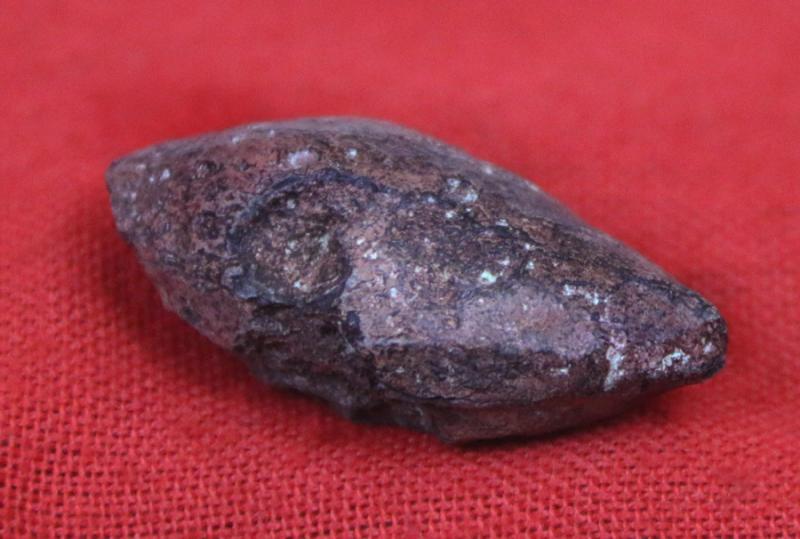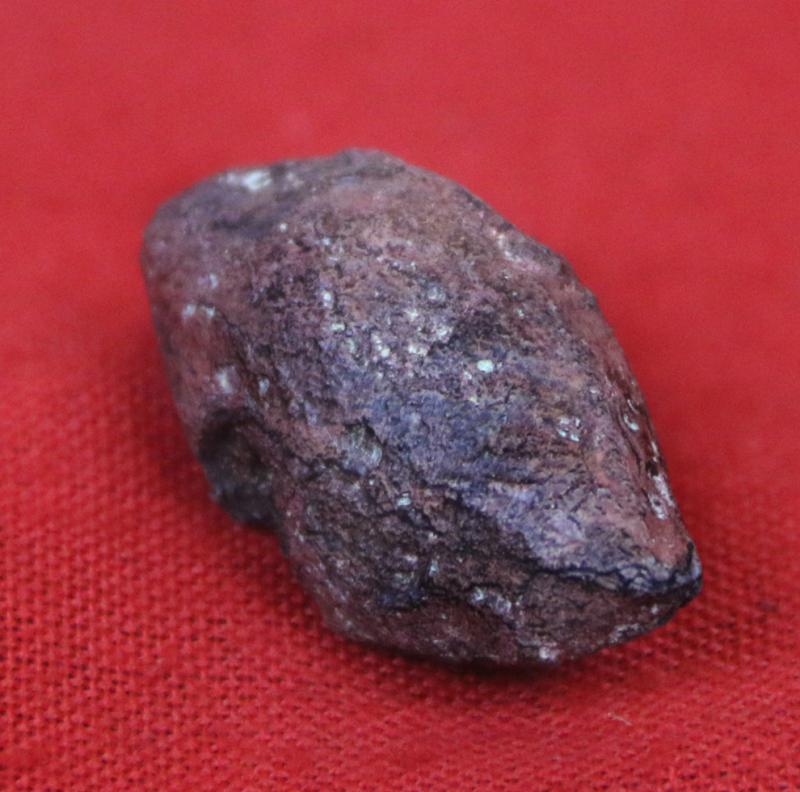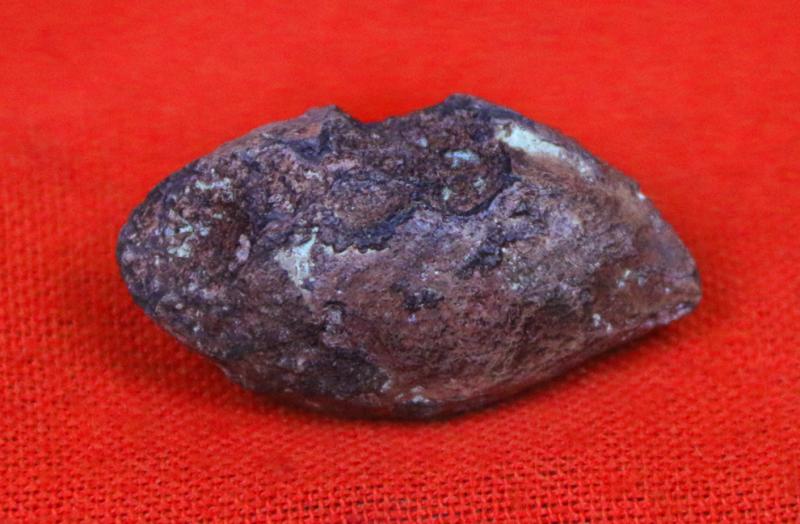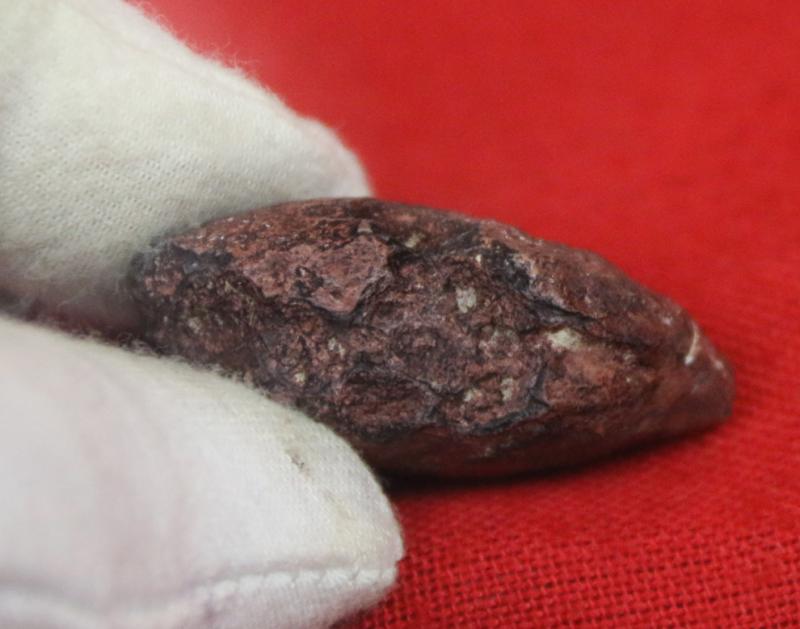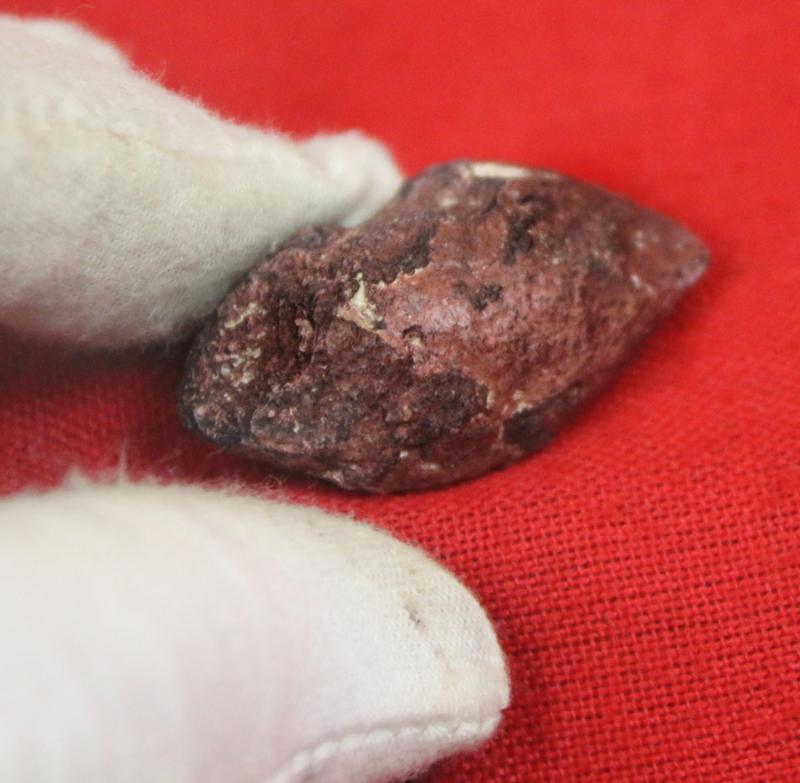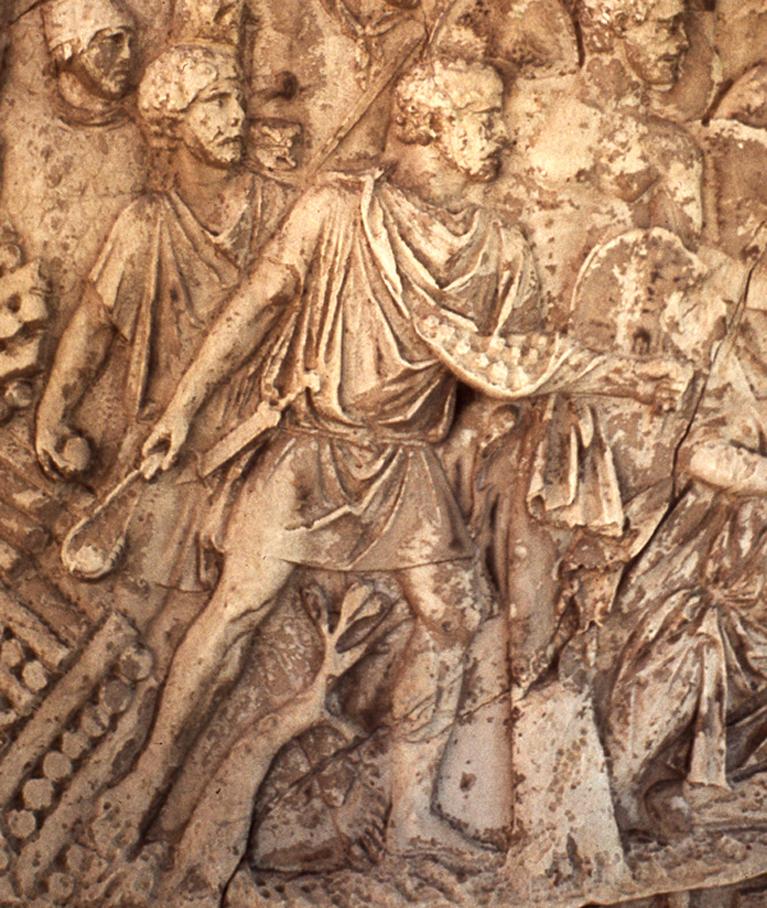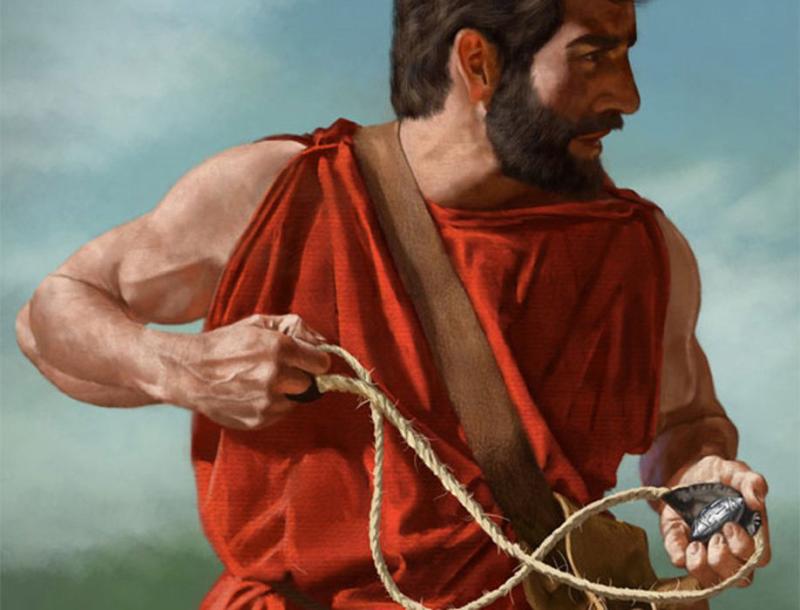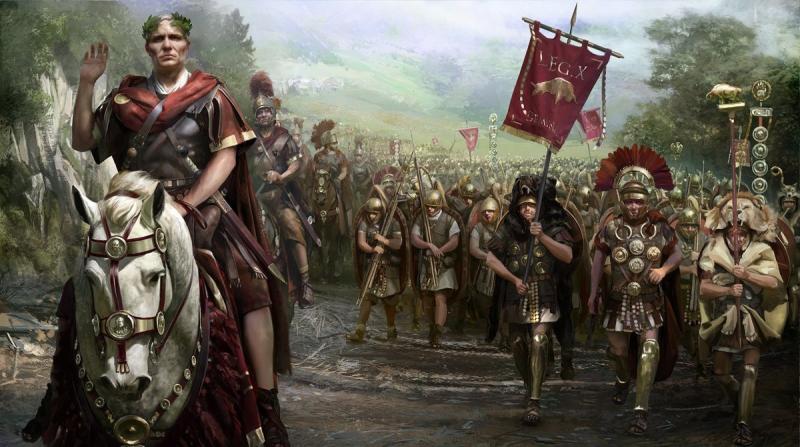Caesarian, Original Roman Republic Period Lead Sling-Bullet Glans Plumbea From Julius Caeser's Civil War With Pompey, From the Battle of Munda 45 bc
From a superb collection of Roman antiquities and ancient collectables, that have just arrived, including a very few Caesarian glans from a centuries past 'Grand Tour' collection. Collected from near La Lantejuela, Andulusia
Caesar's civil war (49–45 BC) was one of the last politico-military conflicts of the Roman Republic before its reorganization into the Roman Empire. It began as a series of political and military confrontations between Gaius Julius Caesar and Gnaeus Pompeius Magnus.
Before the war, Caesar had led an invasion of Gaul for almost ten years. A build-up of tensions starting in late 49 BC, with both Caesar and Pompey refusing to back down led, however, to the outbreak of civil war. Eventually, Pompey and his allies induced the Senate to demand Caesar give up his provinces and armies. Caesar refused and instead marched on Rome.
The war was a four-year-long politico-military struggle, fought in Italy, Illyria, Greece, Egypt, Africa, and Hispania. Pompey defeated Caesar in 48 BC at the Battle of Dyrrhachium, but was himself defeated decisively at the Battle of Pharsalus. Many former Pompeians, including Marcus Junius Brutus and Cicero, surrendered after the battle, while others, such as Cato the Younger and Metellus Scipio fought on. Pompey fled to Egypt, where he was assassinated on arrival. Caesar intervened in Africa and Asia Minor before attacking North Africa, where he defeated Scipio in 46 BC at the Battle of Thapsus. Scipio and Cato committed suicide shortly thereafter. The following year, Caesar defeated the last of the Pompeians under his former lieutenant Labienus in the Battle of Munda. The Battle of Munda was the last episode of the war between the Romans. Eventually, Caesar’s absolute domination in Roman politics was established and the anti-Caesarian opposition virtually disappeared. Labienus was killed at Munda, and the wounded Gnaeus Pompey was captured after a few weeks and beheaded. The victorious Caesar was awarded the title of Liberator and Emperor, had a great triumph, and the scope of his power continued to expand.
The Battle of Munda did not immediately foreshadow Caesar’s victory. His soldiers, most of them poorly experienced, initially succumbed to the enemy’s onslaught, which could have ended in defeat. The decisive attitude of the leader, who knew how to react in the threatened section, and the experience of the legions from the right-wing ensured victory for Caesar.
He was made dictator perpetuo (dictator in perpetuity or dictator for life) in 44 BC and, shortly thereafter, assassinated.
See for reference
Cf. DAmato, R. and Sumner, G., Arms and Armour of the Imperial Roman Soldier: From Marius to Commodus, 112 BC-AD 192, London, 2009, fig.32, p.45, for similar glandes from Zaragoza Museum, one with the name of Pompey inscribed also coming from Monda battlefield; Schinco, G., Small, A.M., 'A previously unknown siege of Botromagno/Silvium: the evidence of slingshots from Gravina in Puglia (Provincia di Bari, Puglia)' in Papers of the British School at Rome, 2019, pp.1-52, figs.31, 37.
This is the sling-bullet 'type IIb of the Völling classification'. This one bears a plain surface cast, some found in the region have the abbreviated name of Julius Caesar; it was used in quantity at the Battle of Monda (or Munda) against the last supporters of Pompey, the leaders of the Optimates, on the 17th March 45 BC. Similar shots were used in the civil war among Pompey and Caesar, and in all of Caesar's wars. The funditores of Caesar's age were part of the light infantry. Caesar speaks of his Balearic slingers during the conquest of Gaul. They wore a short tunic, with leather or rope sandals to the feet, and a warm overcoat which could also have been used to store projectiles. They also used a satchel to carry very deadly lead-like stones or bullets.
1 3/4 in. (62. grams, 45 mm).
A biconical facetted lentoid-section lead sling shot (glans)
Every single item from The Lanes Armoury is accompanied by our unique Certificate of Authenticity. Part of our continued dedication to maintain the standards forged by us over the past 100 years of our family’s trading, as Britain’s oldest established, and favourite, armoury and gallery
Code: 24608
395.00 GBP

